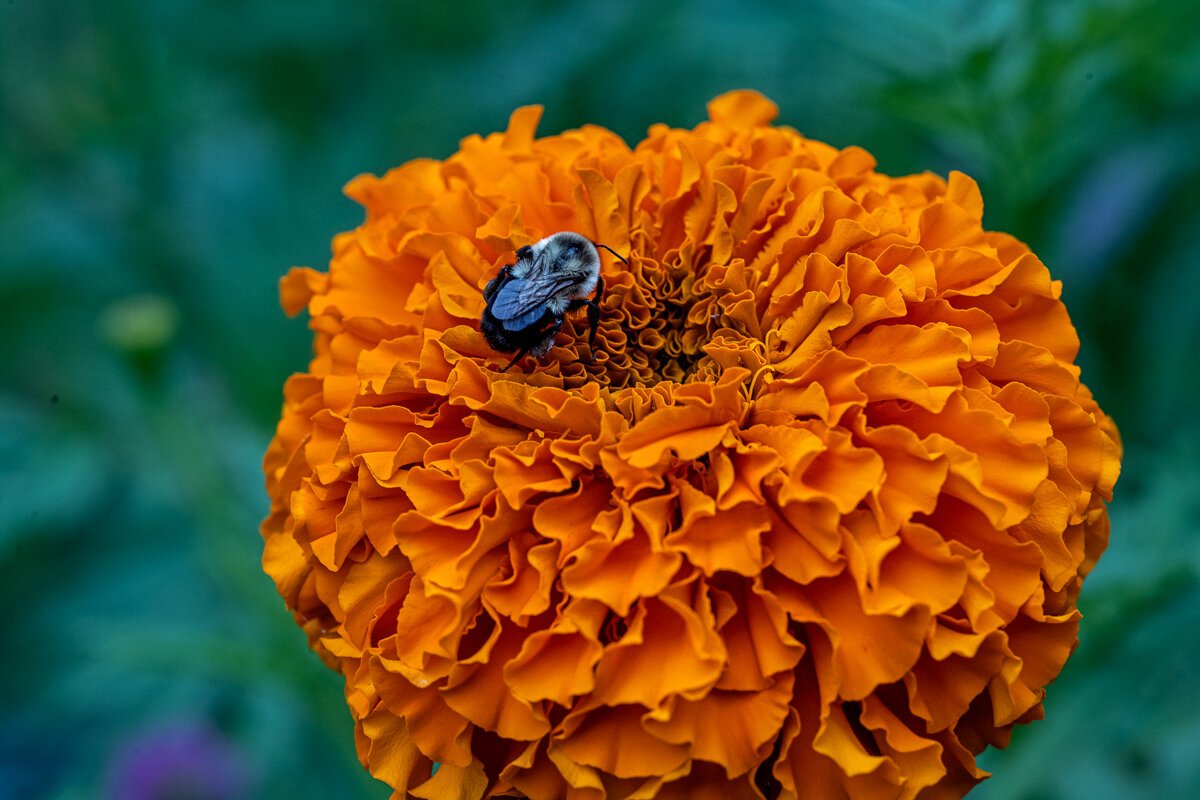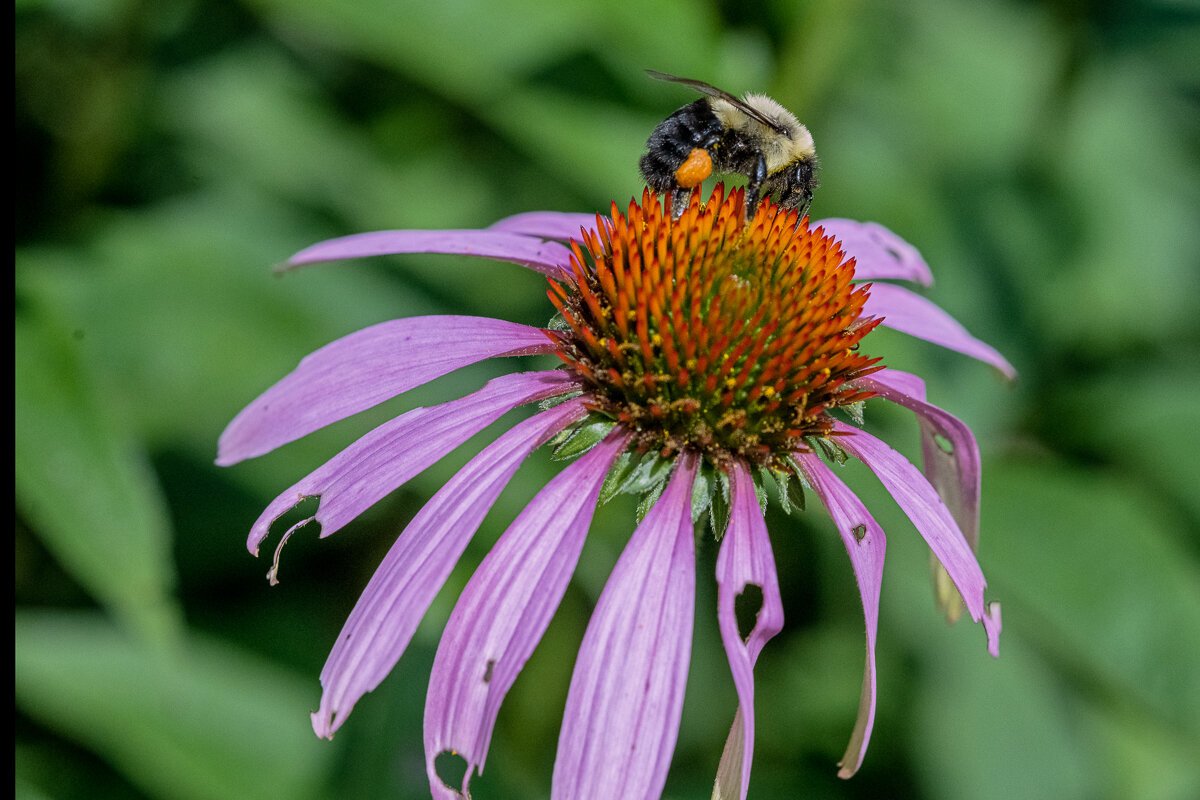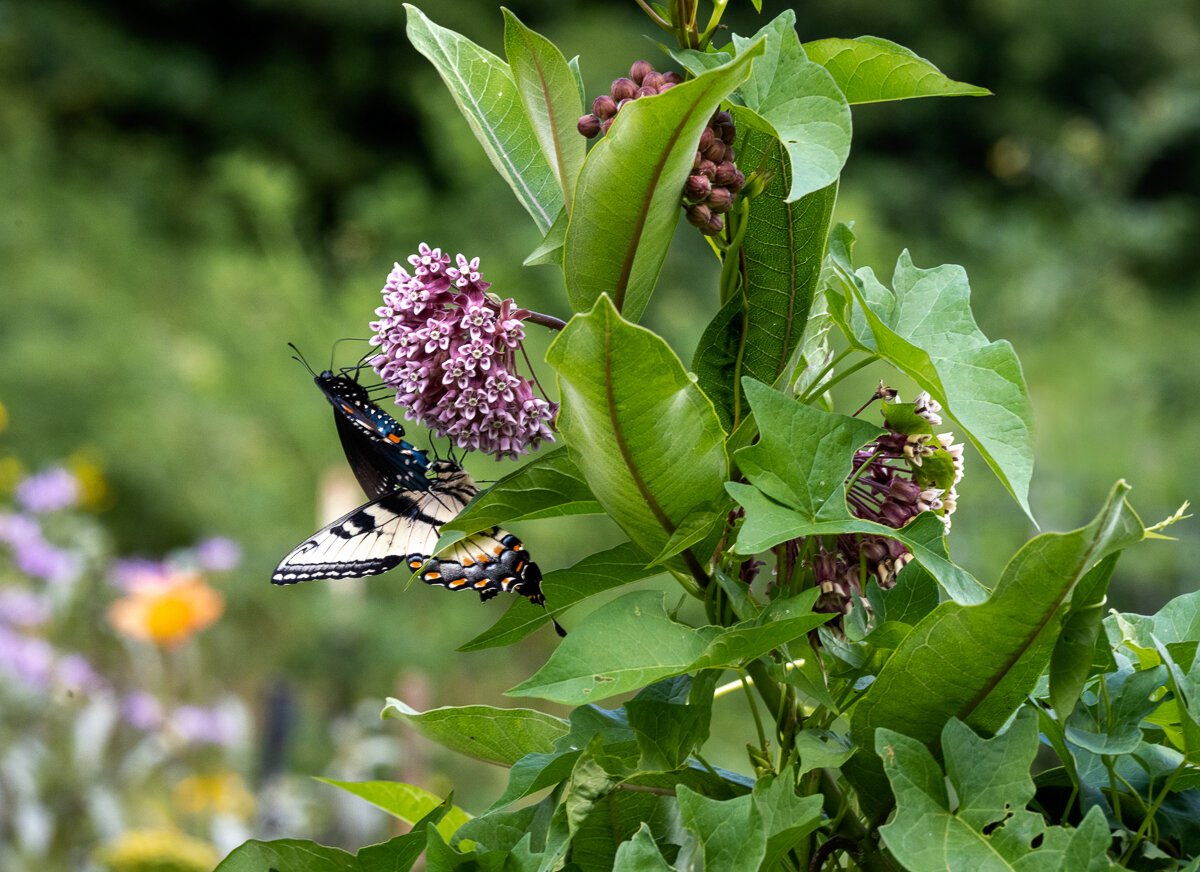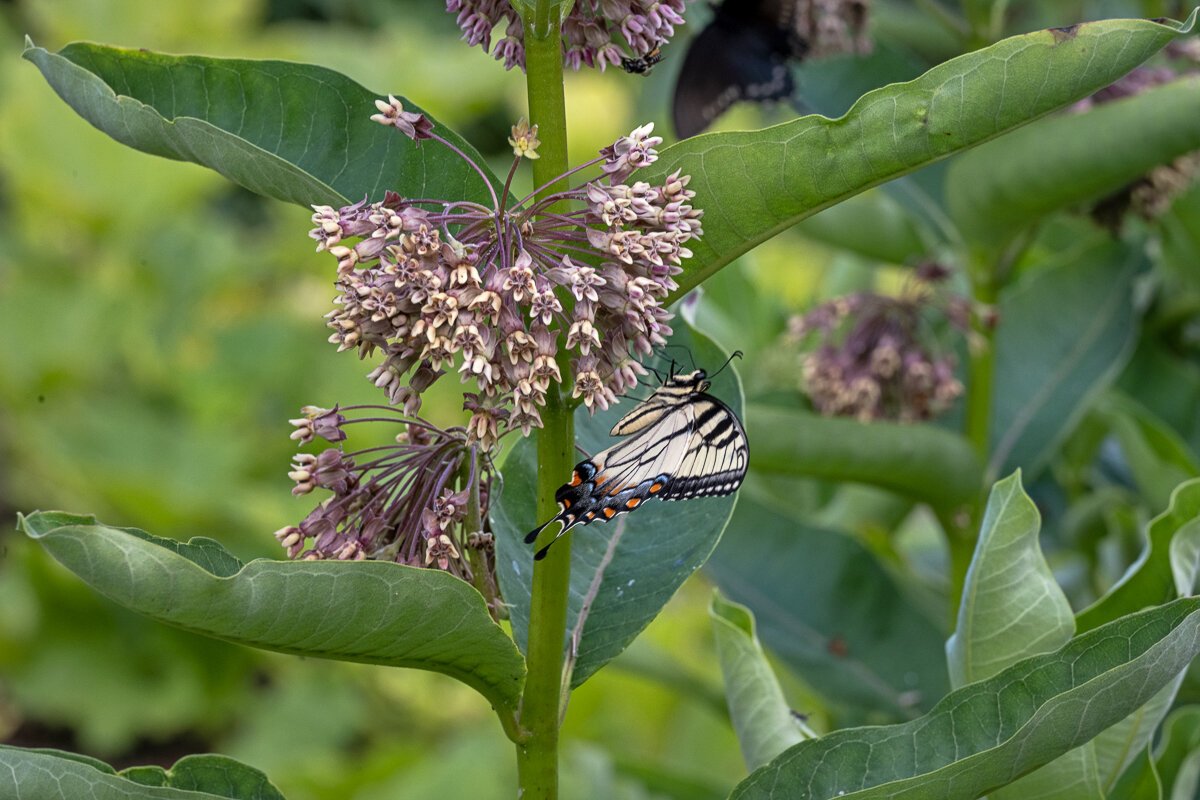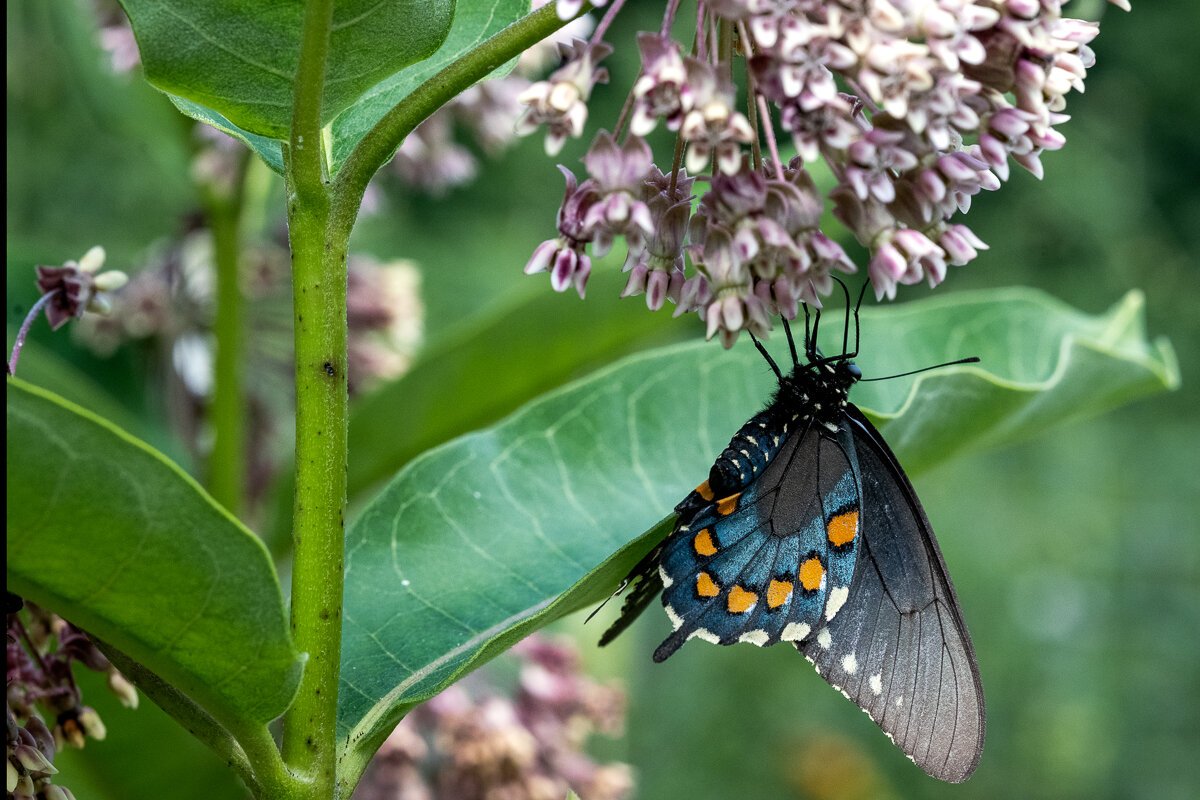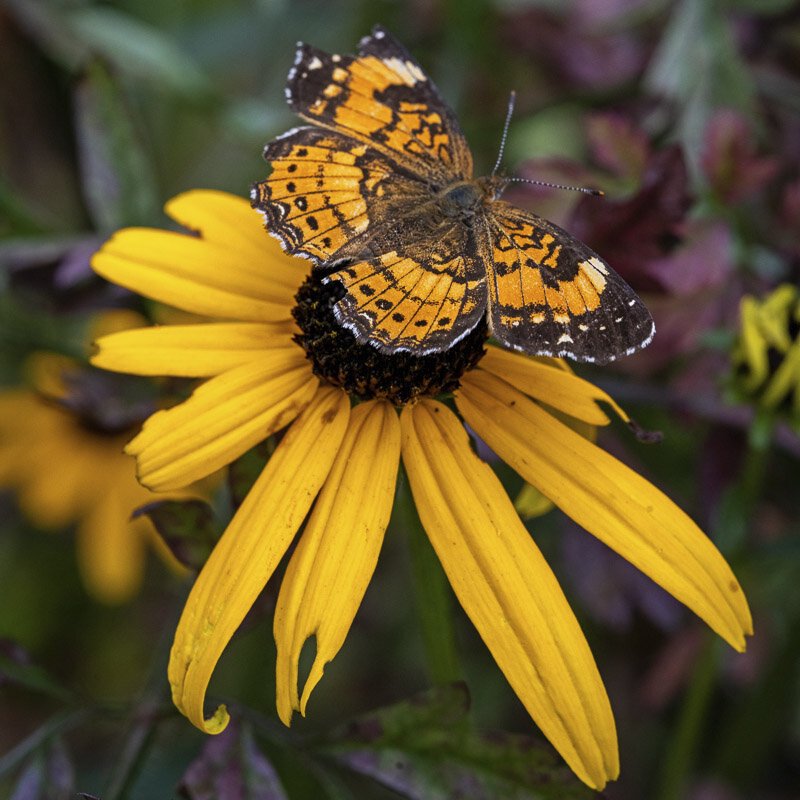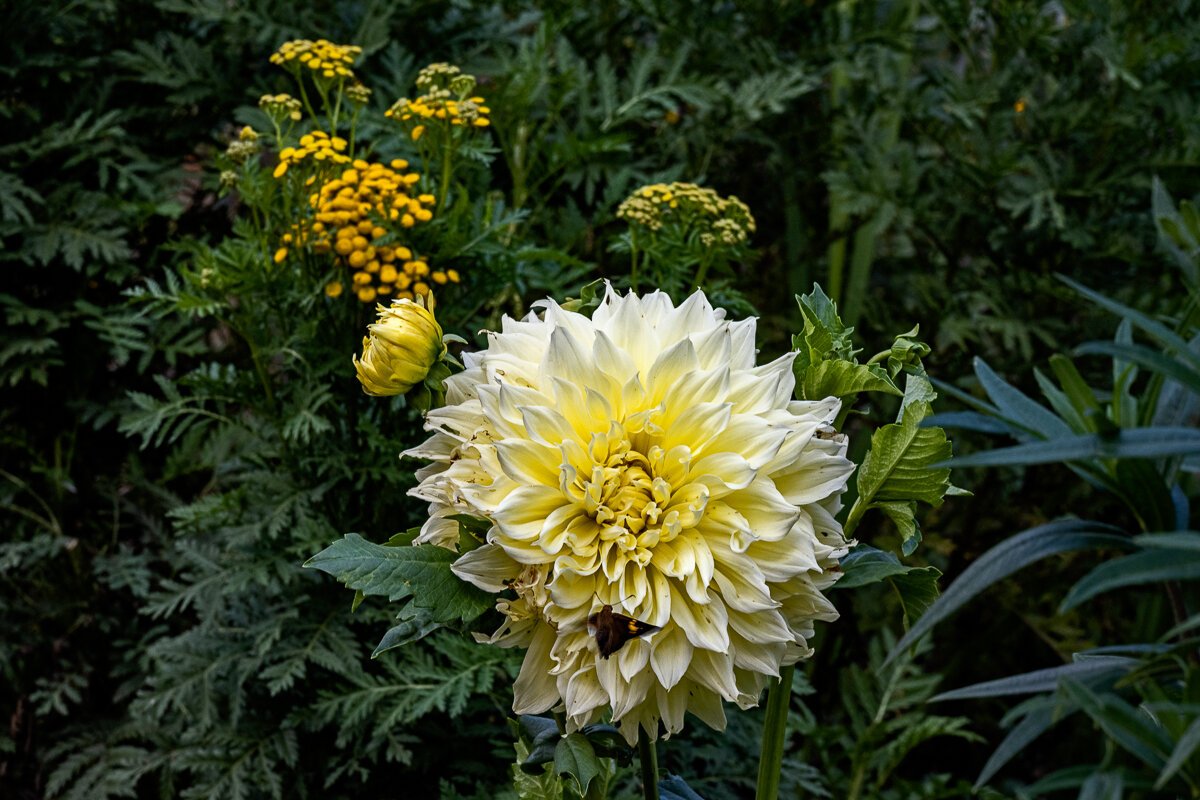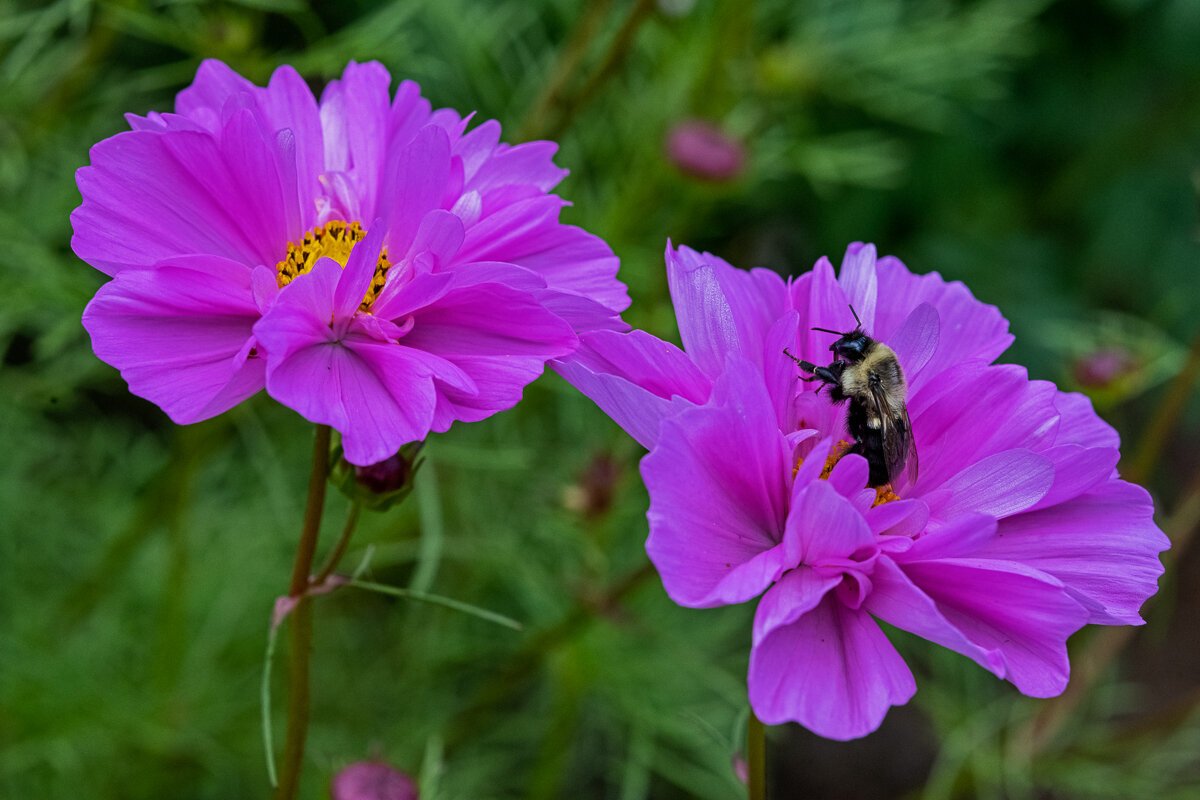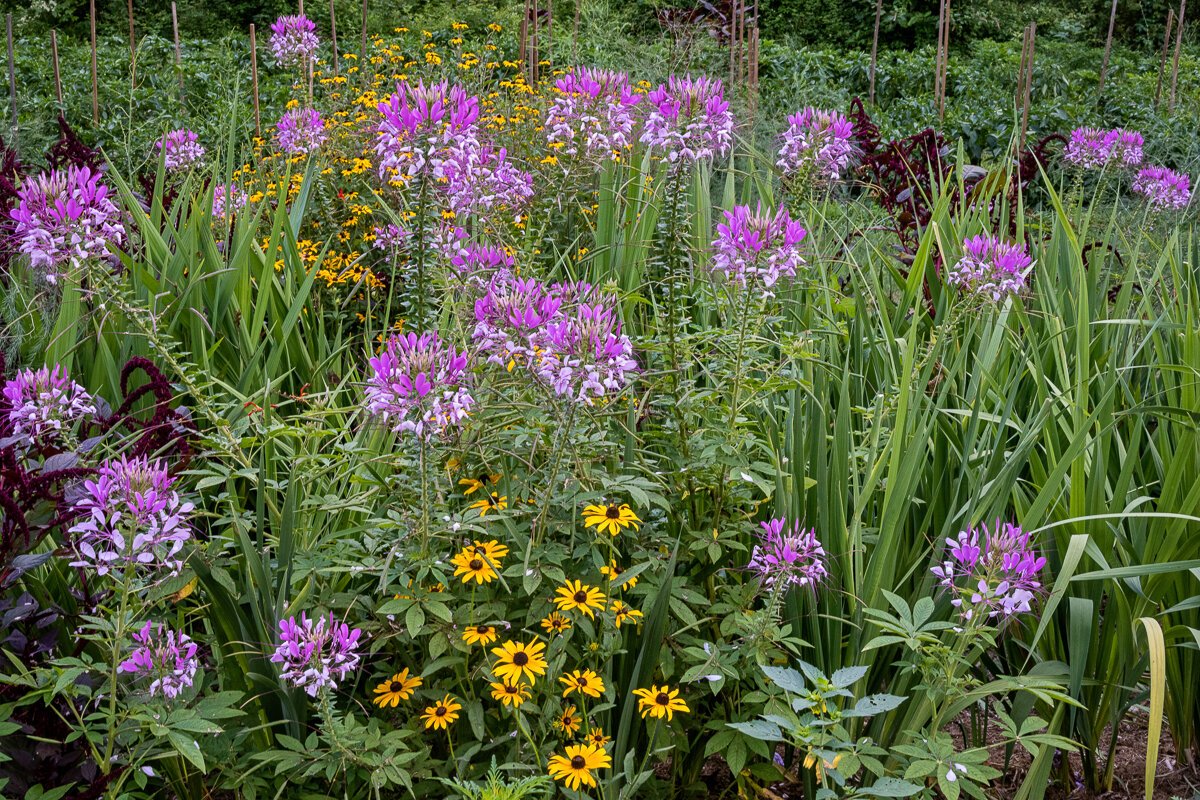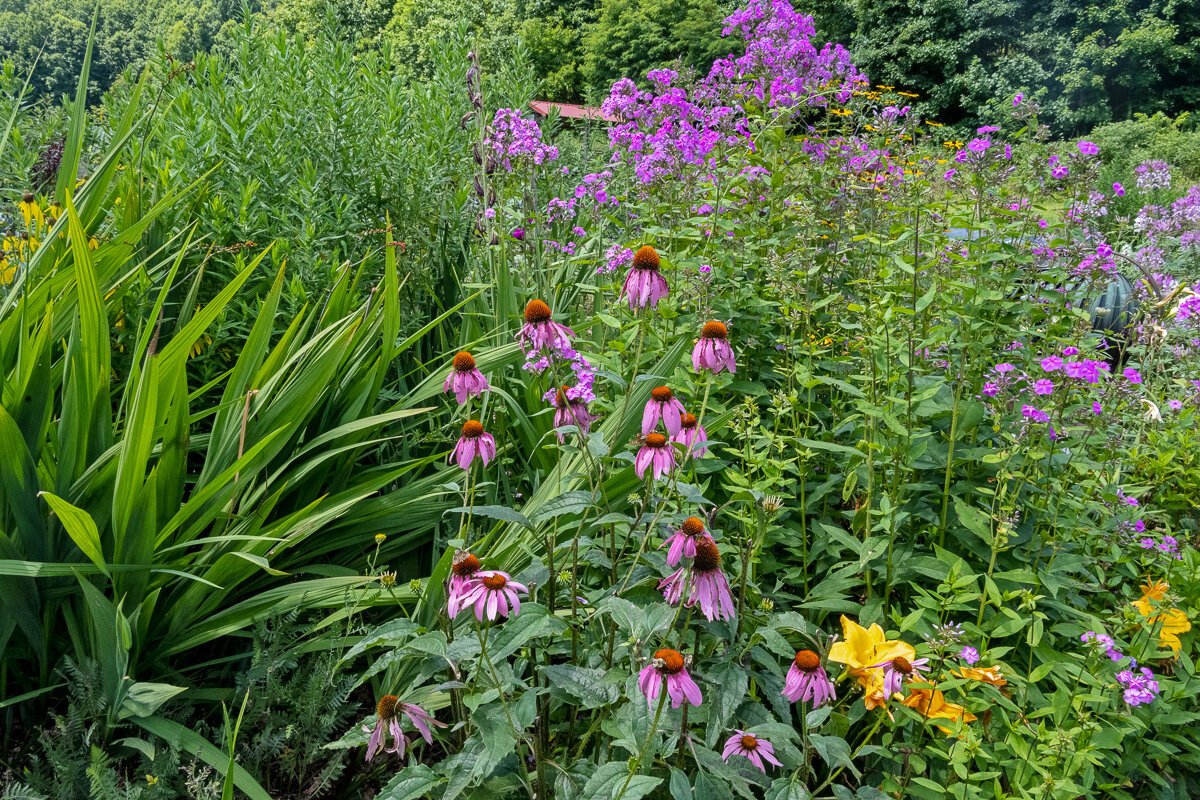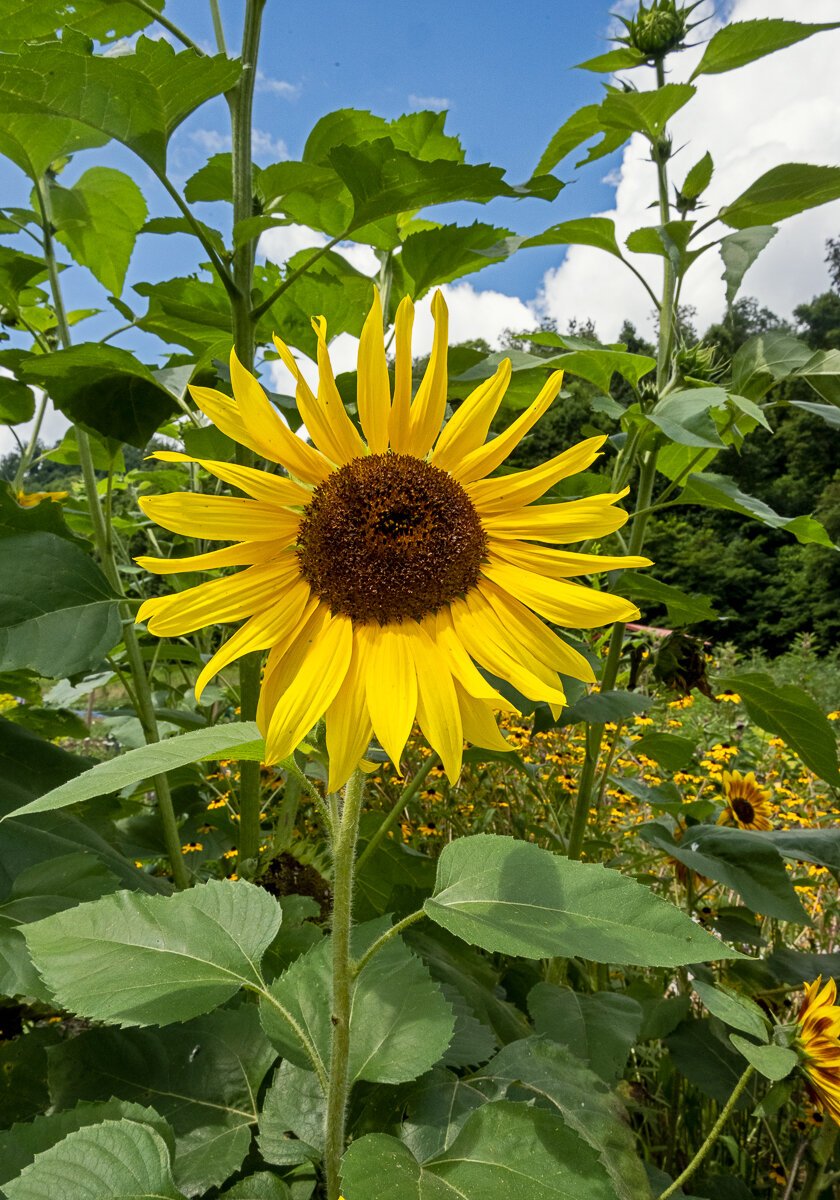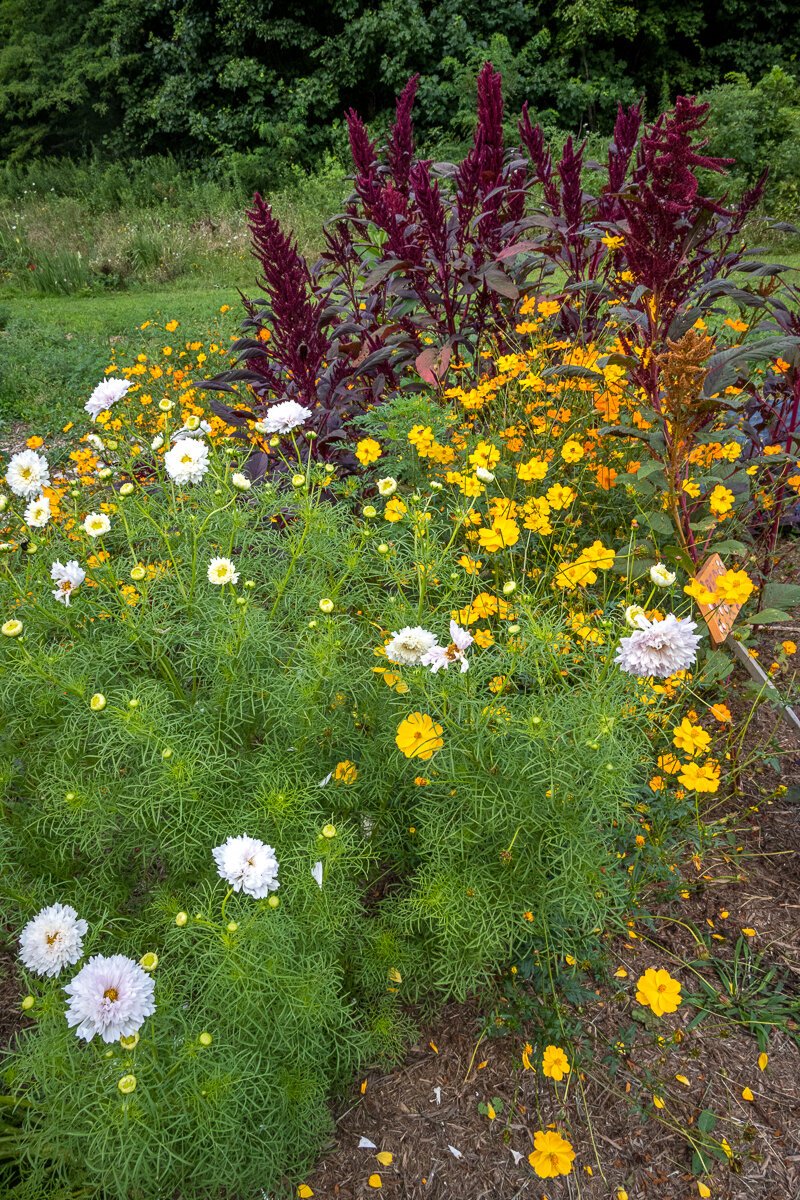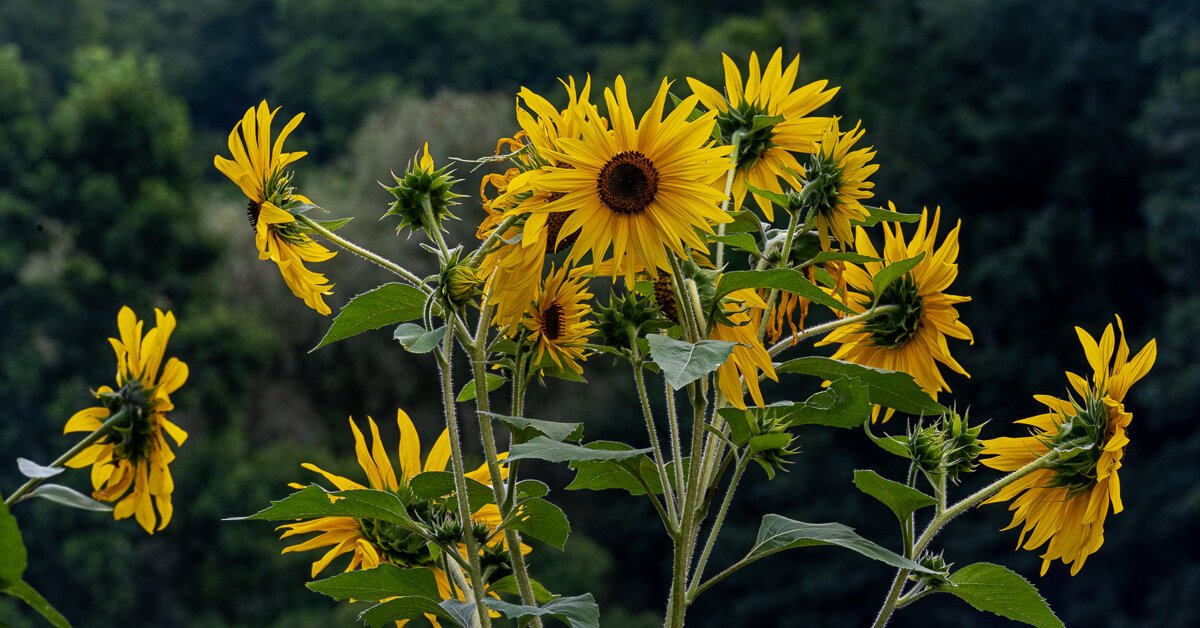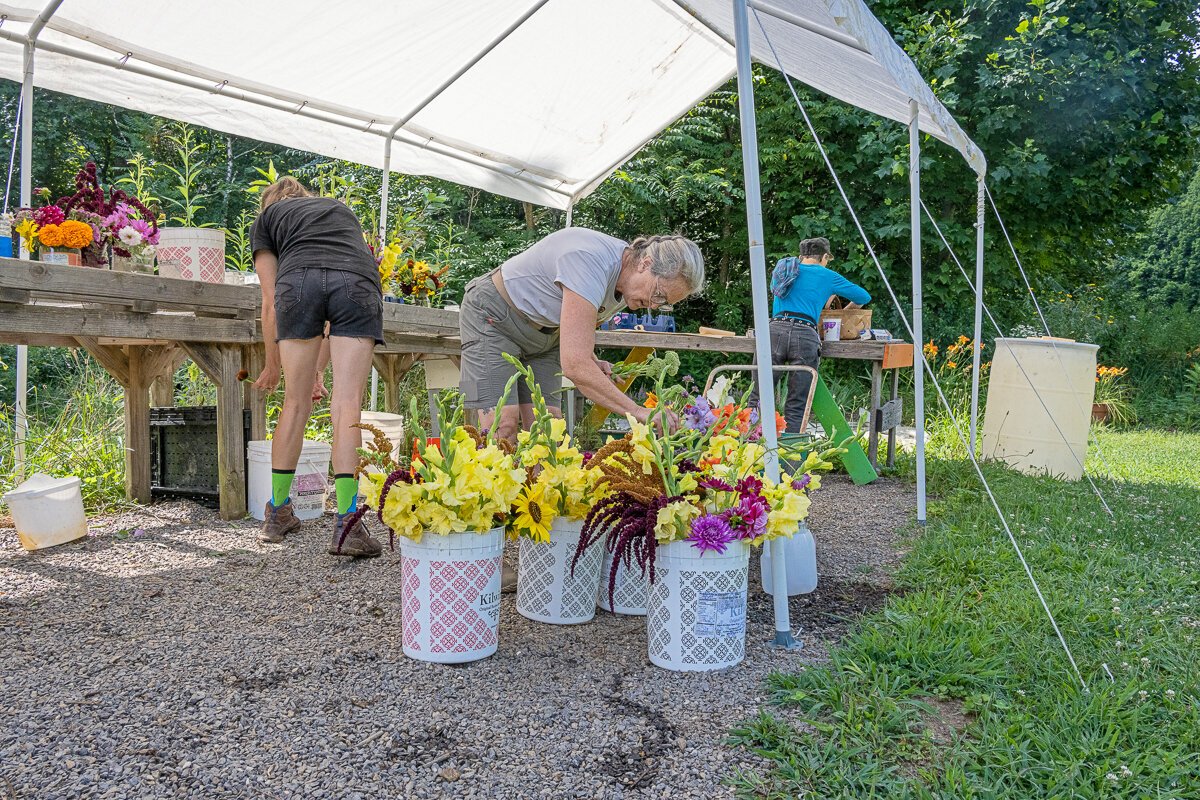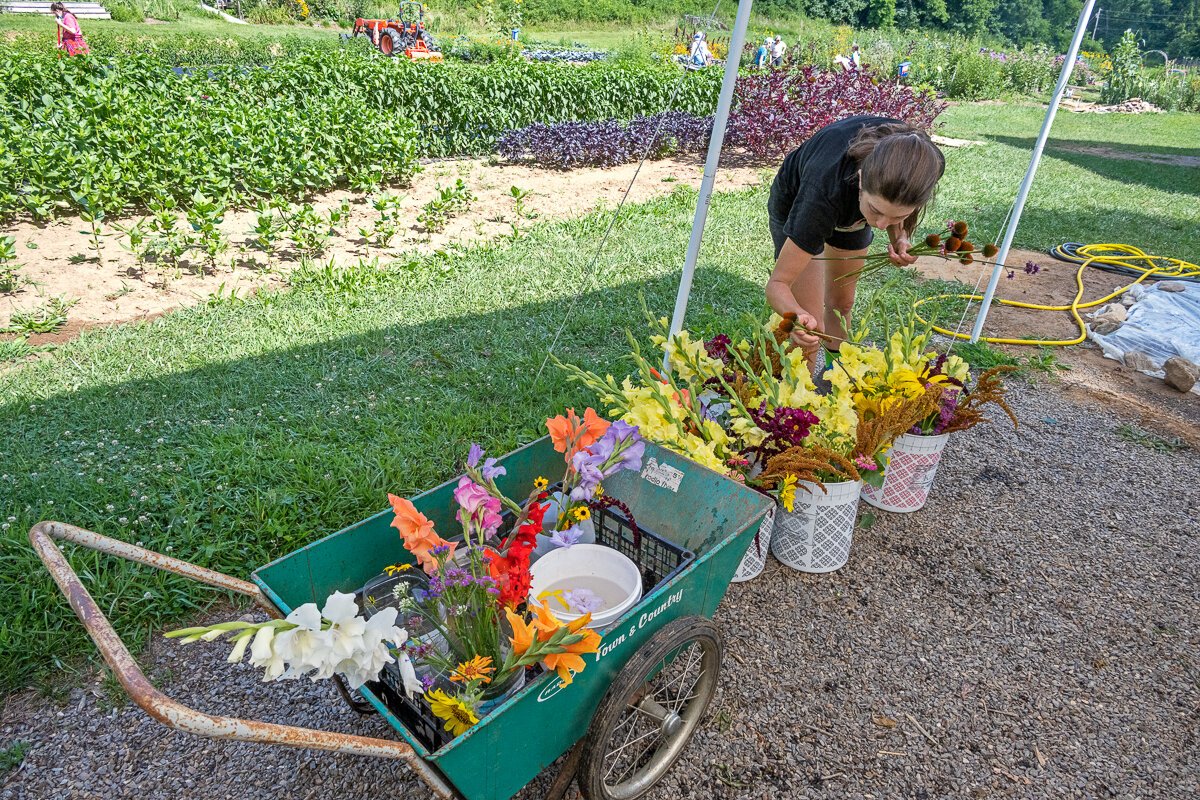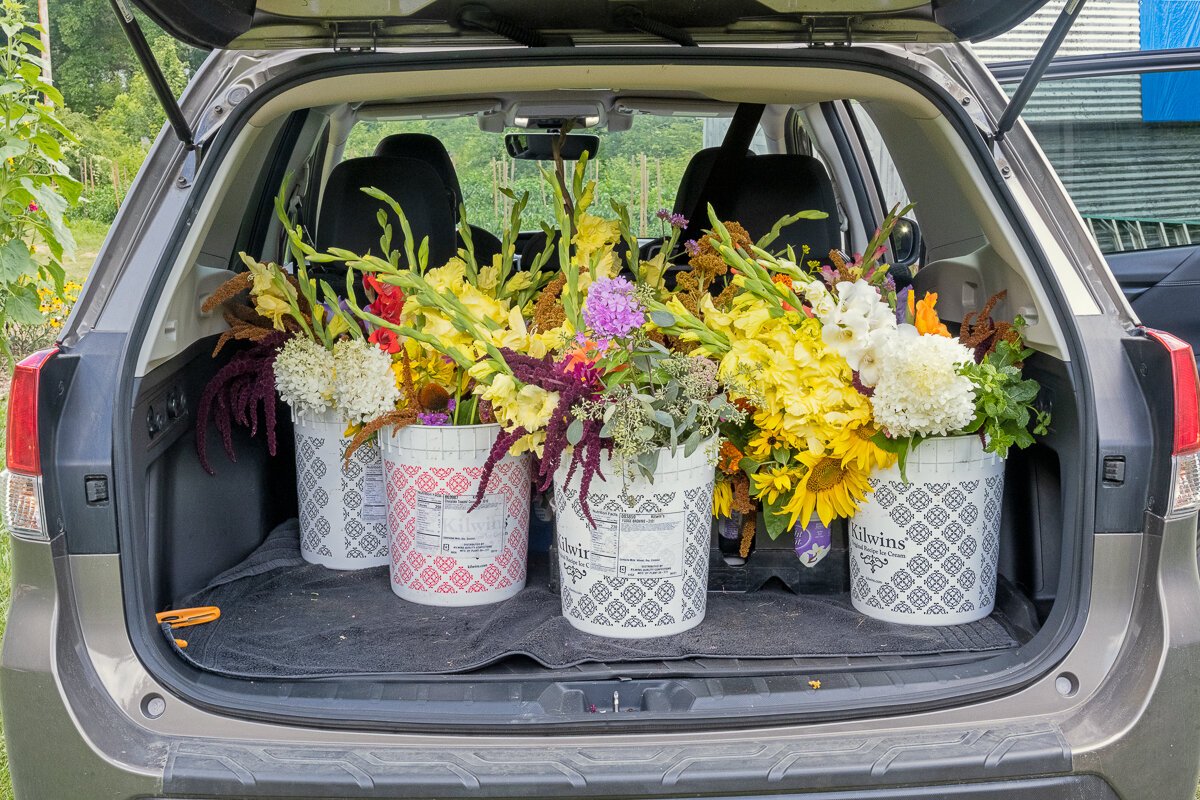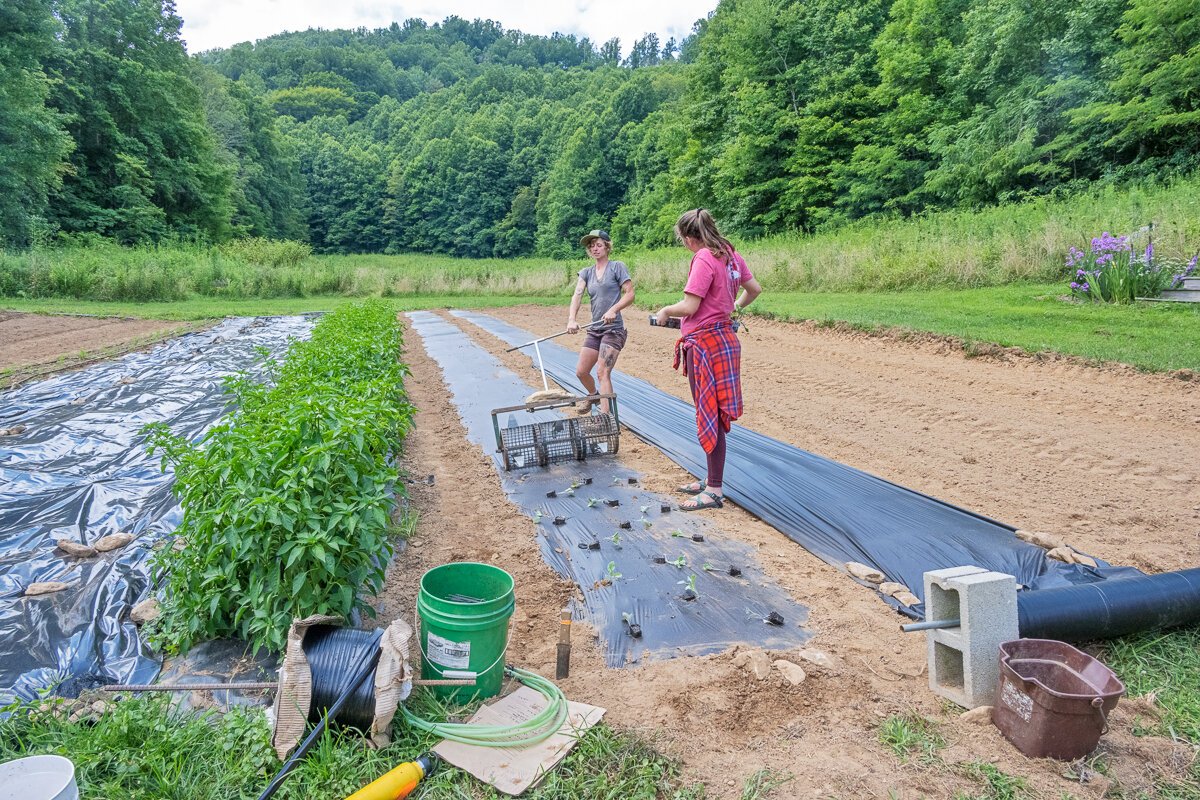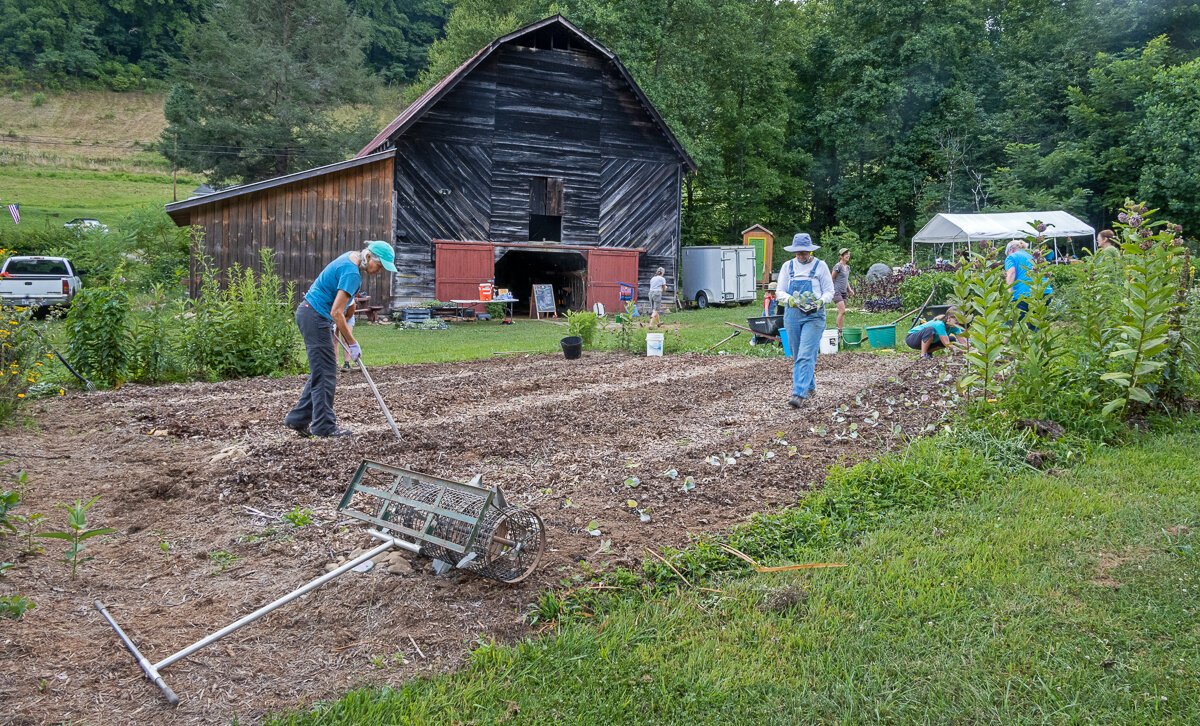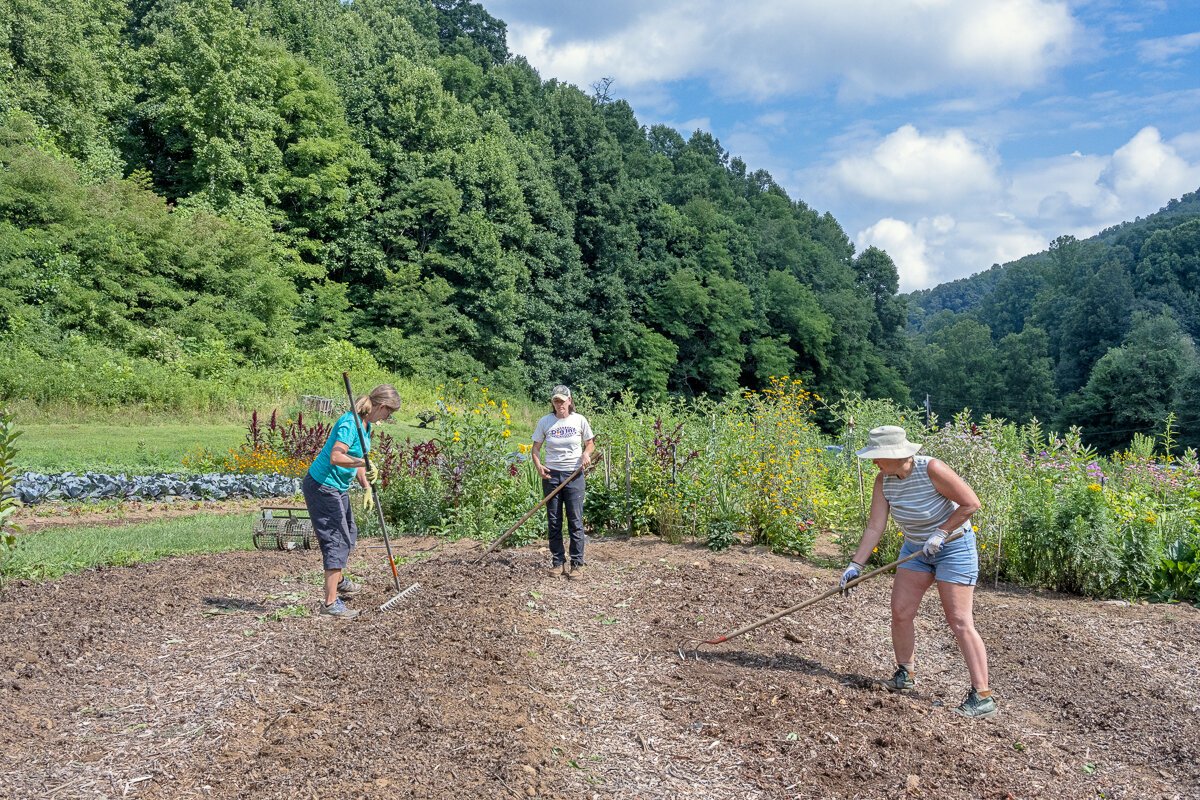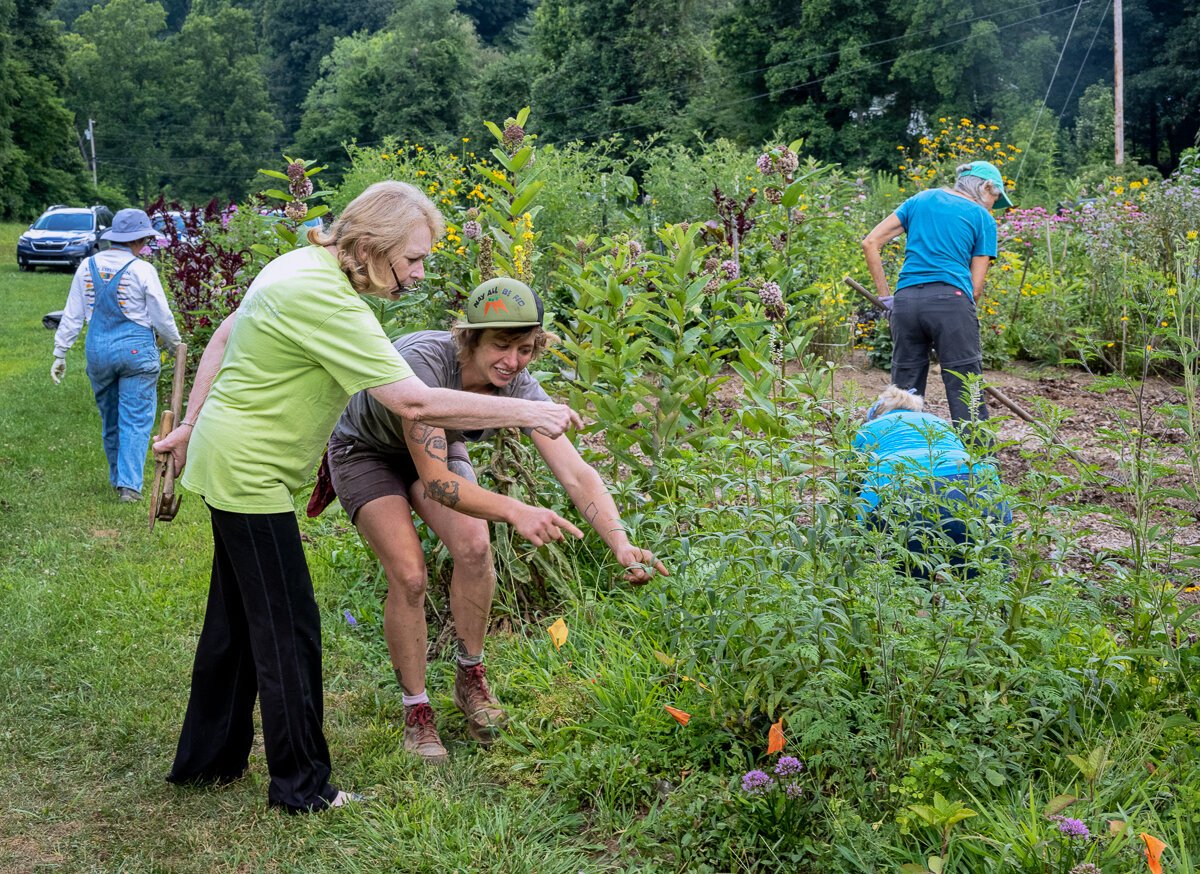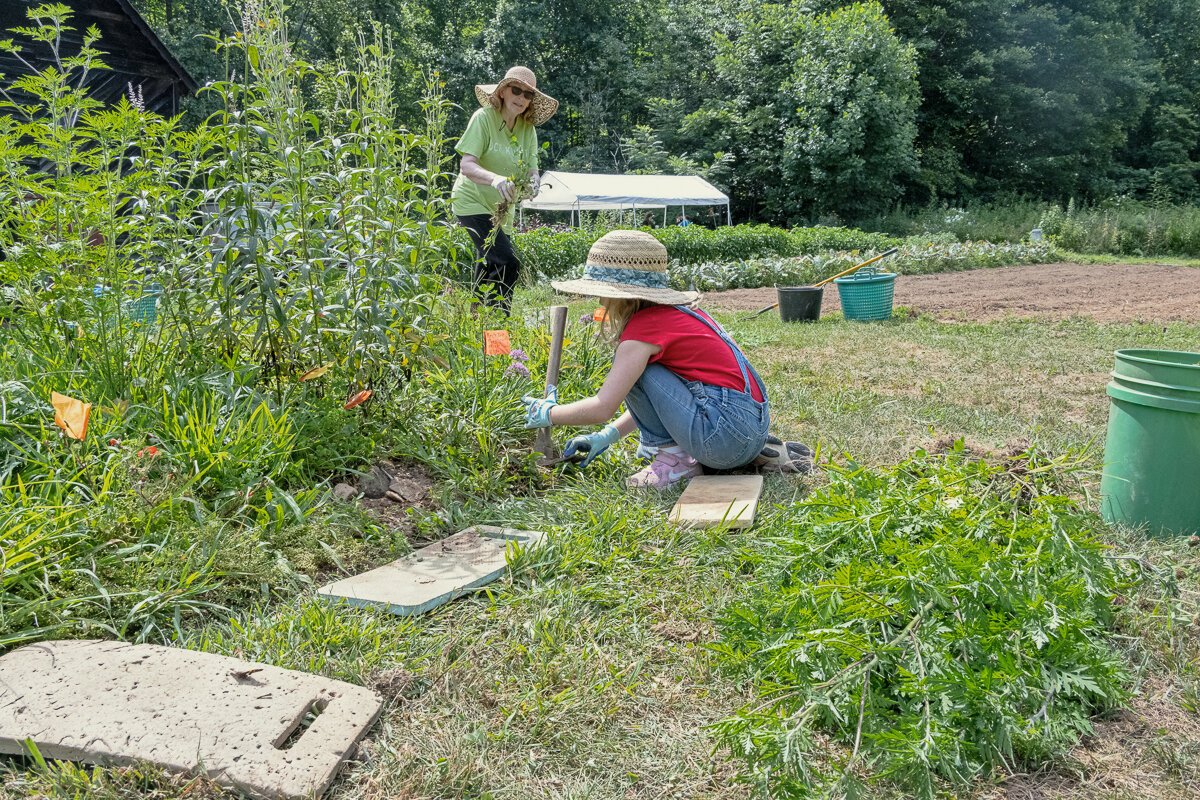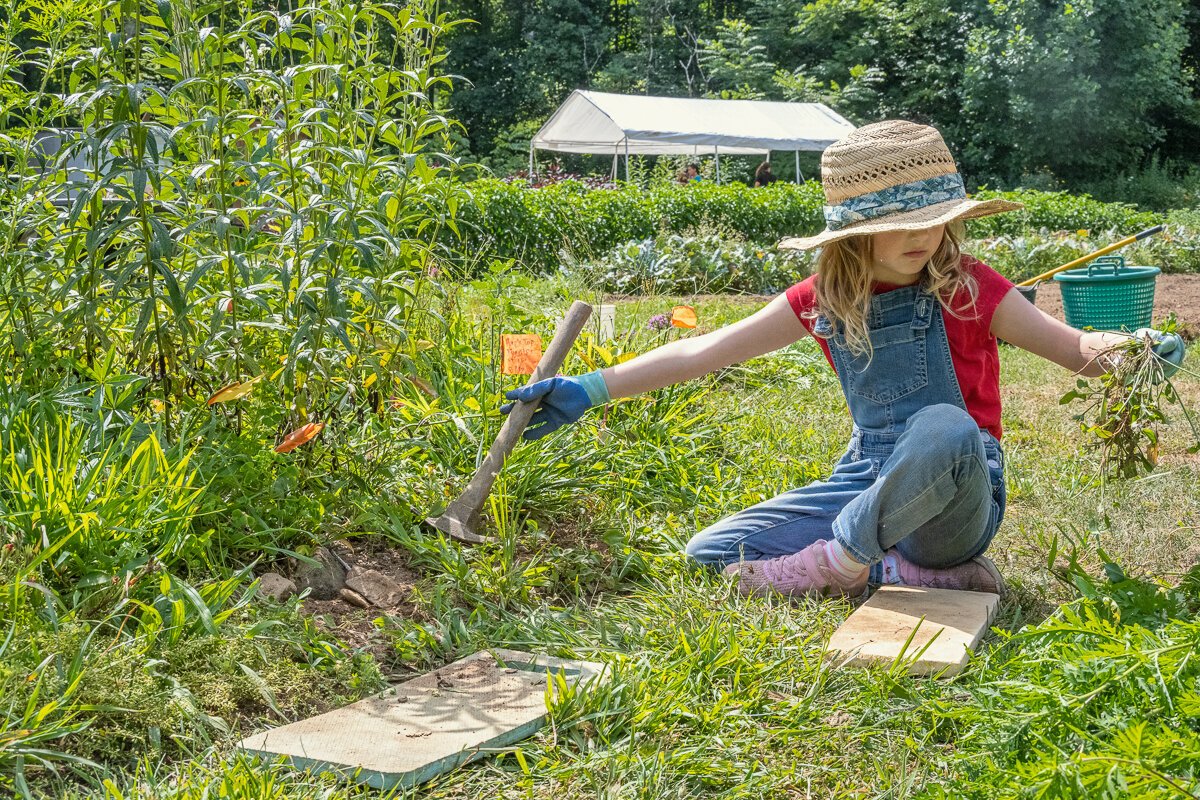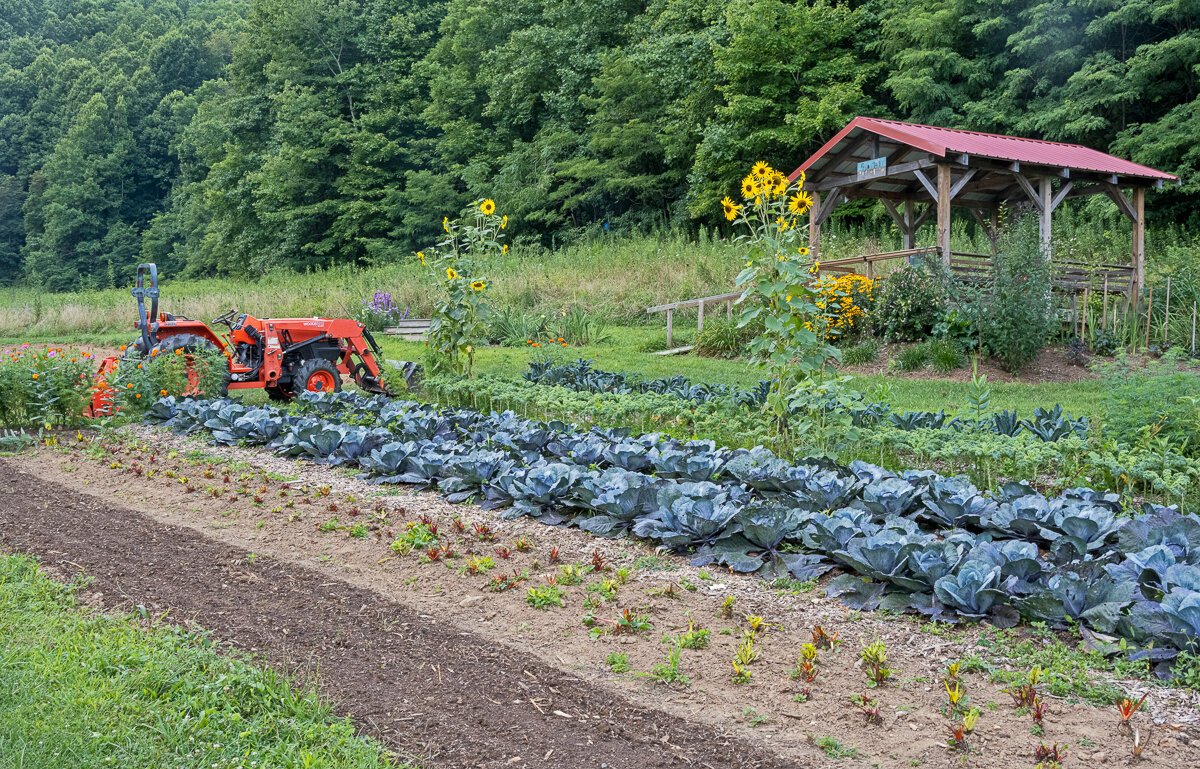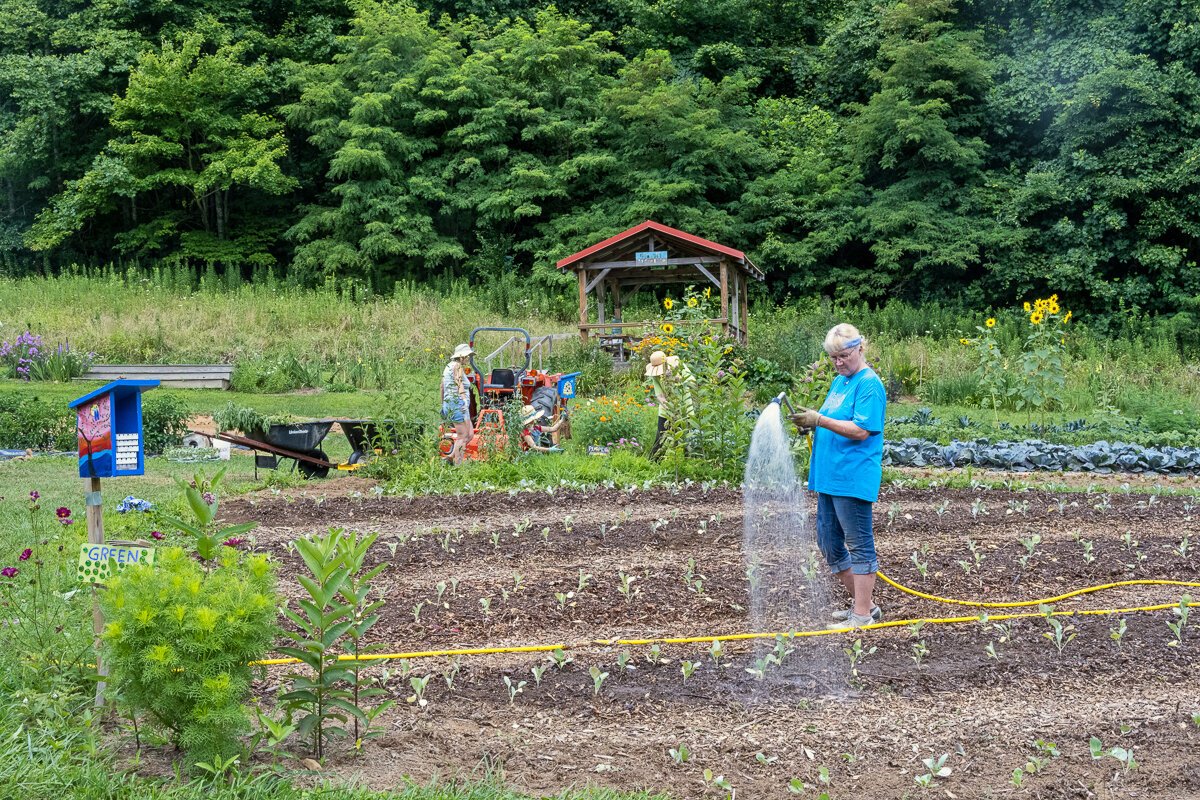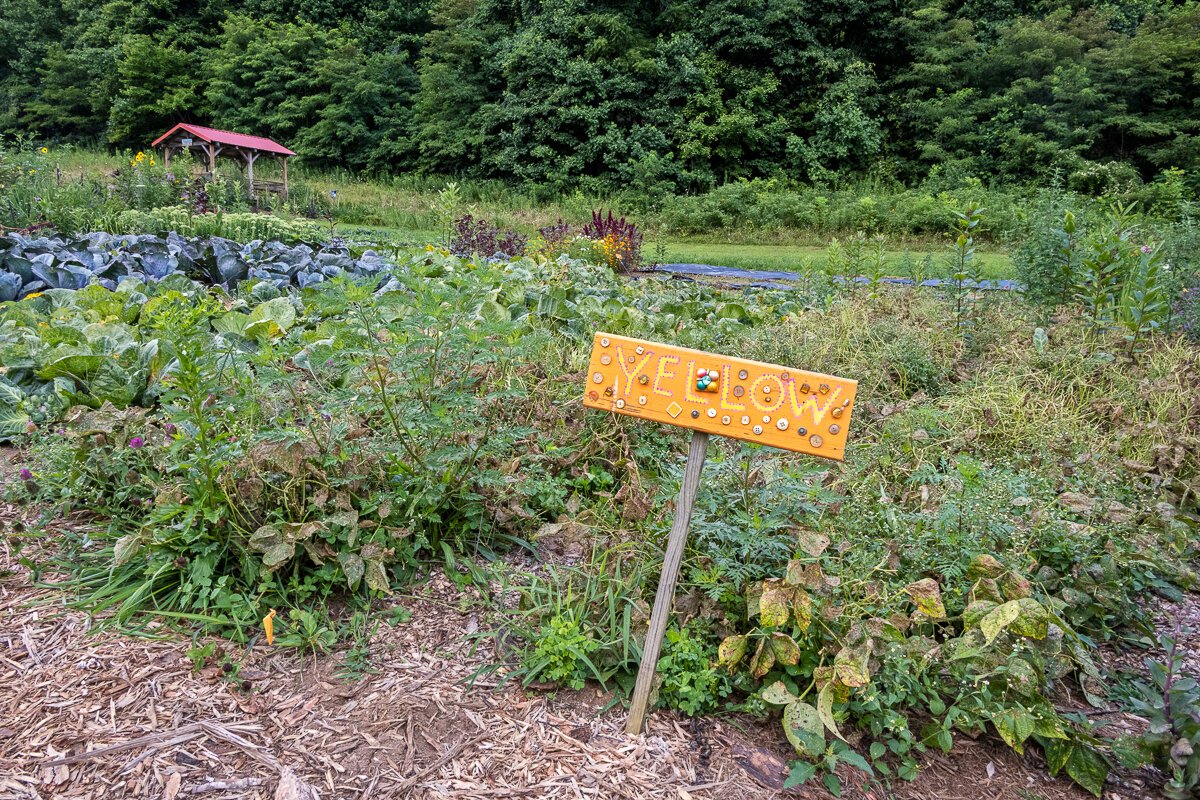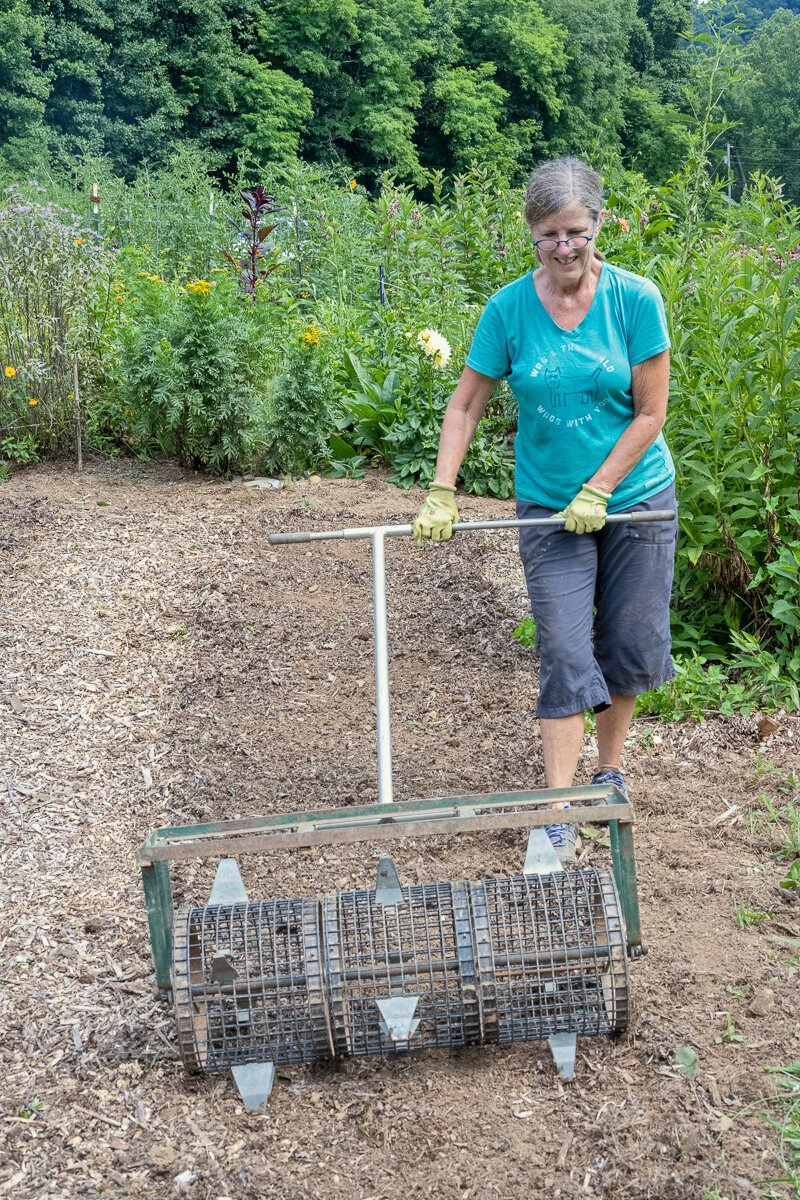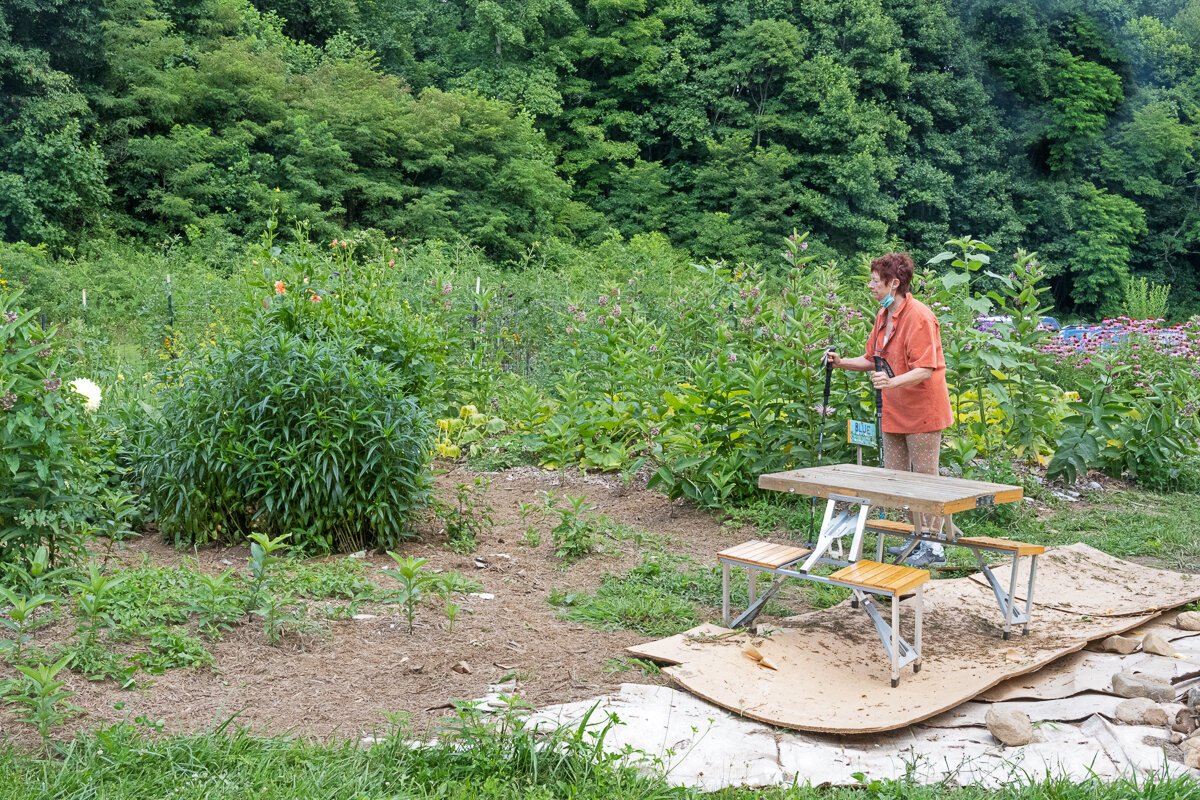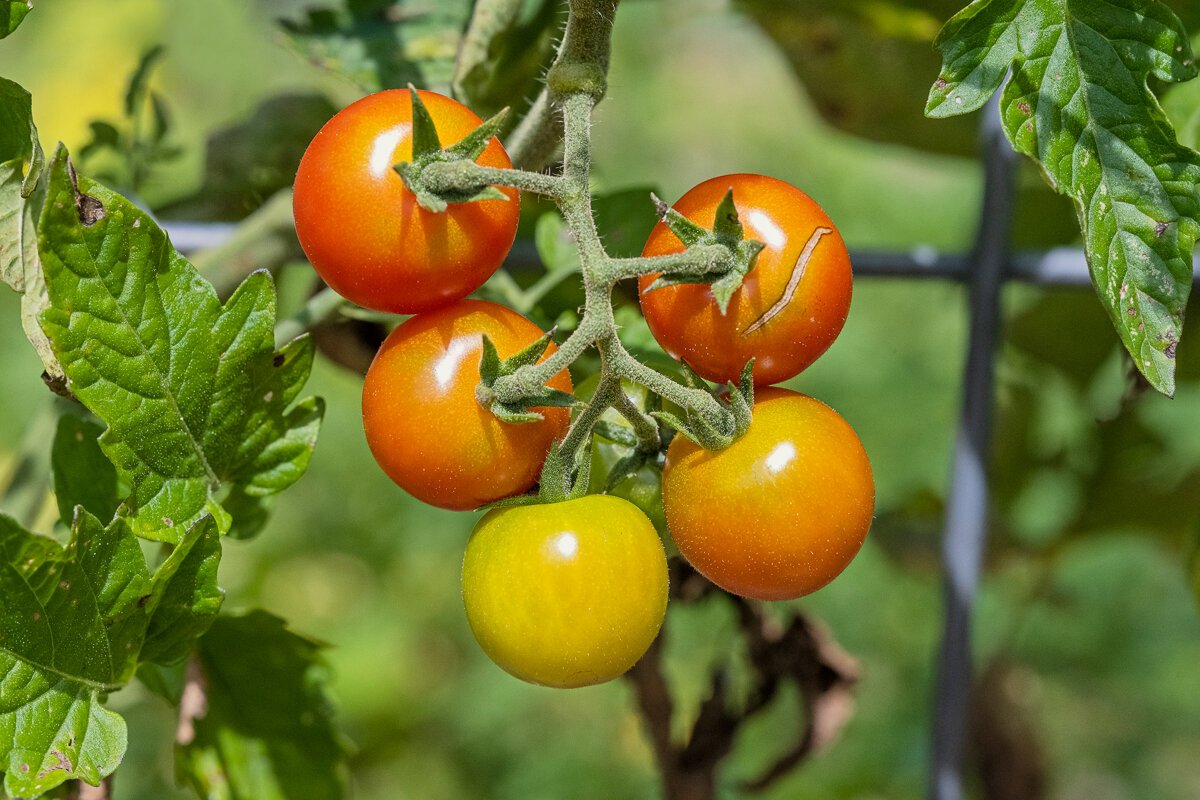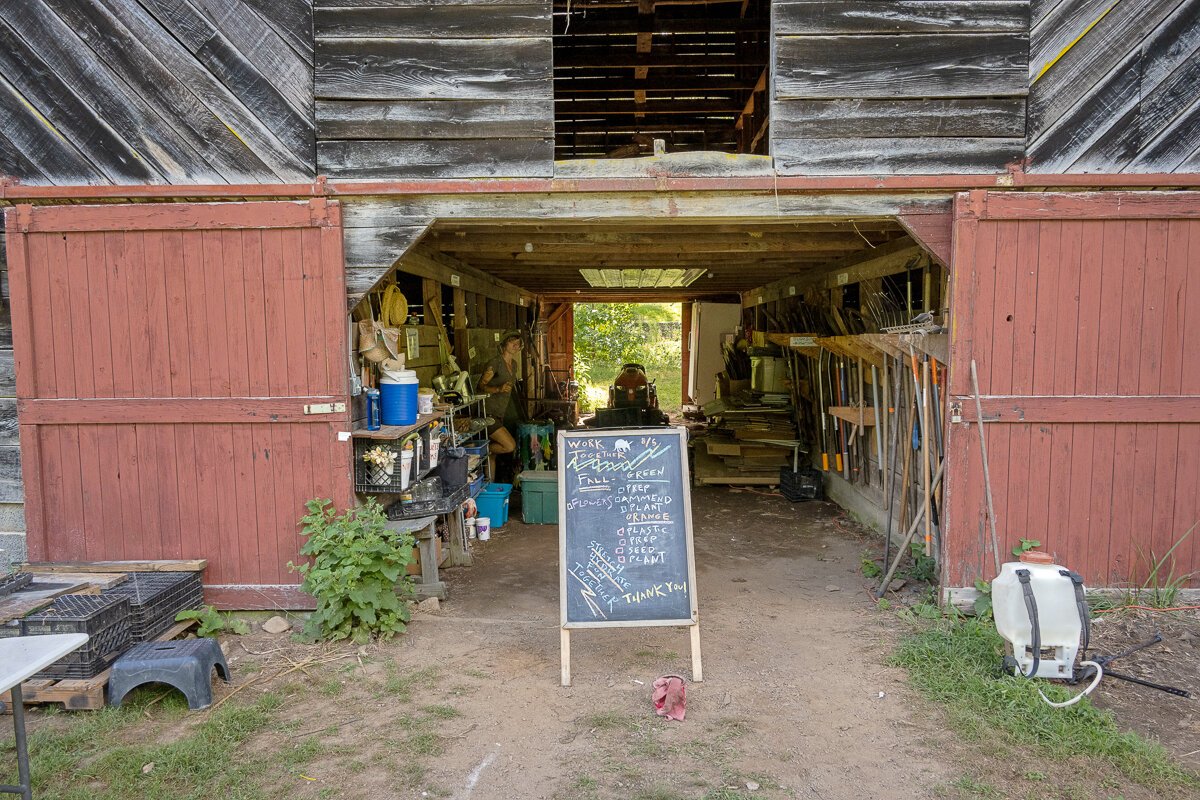This Community Farm's Sustainable Practices Create a Healthy Ecosystem and a Holistic Environment for All Life
Insects Feeding on a Coneflower
During my last visit to the Dig In farm in Yancey County, I found myself marveling at the plethora of insects that have been drawn here–a sign of a truly healthy ecosystem. Bees and butterflies and other pollinators were flitting around everywhere. I don’t think I have ever seen so many in one place, except when I went to a special butterfly sanctuary in Africa. Below are some more images of insect life abounding amid spectacular endemic flowers. The reason the garden is so healthy is because volunteers hand till and water and pull weeds one by one in a discriminating fashion so that beneficial wild plants will be retained. Cardboard and plastic are used to kill weeds, instead of harmful insecticides. Every time I spend a morning here, I feel uplifted and “a powerful sense of life going about the business of getting on with itself,” as William Least Heat-Moon’s wrote about a bayou near Tougaloo, Mississippi in his book Blue Highways. When we work with nature in a holistic fashion instead of trying to dominate and use her as a tool, we heal ourselves too. The volunteers often say they feel this way when they come and work there, especially after dealing with any personal hardships. The sense of integration and connectedness is palpable. I feel so honored that these wonderful people allow me to come here whenever I want, to learn and live and grow.
Here are a few more photographs of the beautiful flowers that are such a magnet for life.
Some of the flowers are picked and made it to bouquets to be sold as part of a CSA to raise money for supplies for the farm.
Below are some images of the volunteers making holes in the earth, pulling weeds, and planting using tools that are held by hand. The tractor is used only to loosen the earth to get some new fields ready to plow. Others are entirely hand-tilled. Kathryn, the lead farmer, drives the tractor. The earth is disturbed as little as possible, so that the soil will be rich and host microorganisms that contribute to making the farm healthy and a good carbon sink. Mazzi, the young girl in the middle row spent several weeks farming here and came last summer too. She told me she loves doing this and I could see she is a great little workhorse. I know she will grow up caring for much more than herself and will be a good citizen of the earth.
There is personal healing that comes from working in or visiting this community garden. When I was there I was talking with Jessica, the woman in the photograph on the left, whose mother is facing her end of life as is my own. She had recently returned from visiting with her mother in Texas and had just received news that she was doing poorly. Jessica woke up feeling sad and just felt like staying home, but she made herself come and as she worked she felt her spirits lift. There is a powerful cycle of life going on here that nourishes the soul and can be appreciated by laboring or just walking amid the beds.
As I mentioned before, all the fruits of this beautiful community garden would not be possible without the dedication and love that these volunteers pour into their work and the land, from the young to the old, from experienced farmers to those who are just starting out. The lessons being learned here transcend any conception of manual labor, although they all feel great satisfaction from working with their hands. What is being taught is how to live more responsibly and kindly for the good of all. The volunteers also reap great satisfaction from seeing plants and crops thrive without harming the surrounding environment. What they are doing here helps the planet thrive beyond the boundaries of the farm. This is truly a model for communities everywhere.


